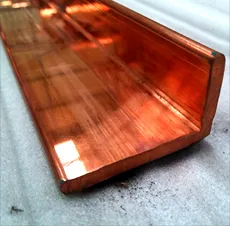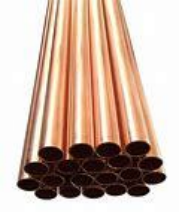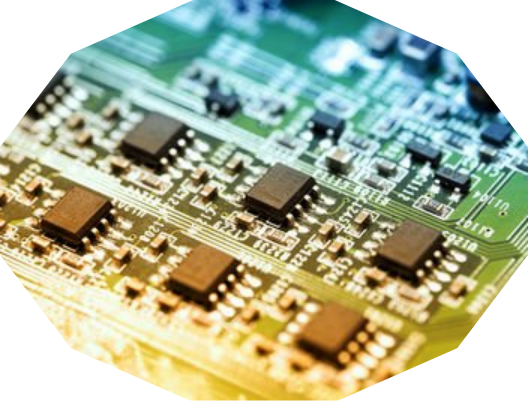1. Introduction
Copper rod is one of the most versatile and widely used materials in electrical, plumbing, and industrial applications. From grounding systems to welding repairs and scrap recycling, knowing how to properly handle and apply copper rod can save time, money, and headaches. Whether you’re installing a copper earth rod for safety compliance, joining pipes with a copper welding rod, or stripping copper wire for scrap, this practical guide covers the most common—and useful—ways to work with copper rod. We’ll also touch on related products like copper strip, copper tubing, and copper bonded ground rods so you can make informed decisions based on your project’s needs.

2. Installing a Copper Earth Rod for Safe Grounding
A copper earth rod (also called an earthing rod copper or ground rod copper) is essential for diverting electrical surges safely into the earth. Start by choosing the right type: solid copper rods offer the best conductivity, but copper bonded earthing rods—made from copper bonded steel—are more affordable and still highly effective. Copper clad steel ground rods are another popular option, combining strength and corrosion resistance.
To install, drive the rod vertically into moist soil using a hammer or driving tool until only a few inches remain above ground. Connect your grounding wire using an approved clamp, ensuring a tight, corrosion-resistant connection. Always check local electrical codes for depth and sizing requirements—common sizes include 5/8″ diameter and 8-foot lengths. If you’re comparing options, note that copper bonded ground rod prices are typically lower than solid copper, making them a smart budget-friendly choice without sacrificing performance.
3. Welding and Brazing with Copper Rod
When repairing or joining copper components, you’ll often reach for a copper brazing rod or copper welding rod. For copper-to-copper joints, copper to copper brazing rods or copper to copper welding rod types are ideal because they melt at compatible temperatures and create strong, conductive bonds.
Before welding, clean the surfaces thoroughly with a wire brush and apply flux to prevent oxidation. Use a torch to heat the base metal evenly—not the rod itself—and feed the copper rod into the joint once it’s hot enough to melt the filler. For plumbing or HVAC work involving aircon copper pipe or copper pipe for AC systems, brazing with a copper rod ensures leak-free, durable connections. Remember: copper rod for welding must match the alloy and thickness of your base material to avoid weak joints or cracking.

4. Choosing the Right Copper Round Bar for Your Project
Not all copper rods are round wires—many are solid copper round bars used in busbars, electrical contacts, or machining. When sourcing round bar copper, consider conductivity, tensile strength, and whether you need a flexible copper bar for tight spaces. Standard sizes like 15mm copper pipe equivalents or custom diameters are available, and prices vary based on purity and form (e.g., copper ingot vs. machined bar).
For high-current applications like switchgear or battery systems, copper bus bar or flexible copper bus bar made from high-conductivity copper bar top material is preferred. Always verify specs: a 22mm copper tube might look similar but serves a different purpose than a 22mm solid copper round bar. Check copper rod price listings from reputable suppliers to avoid overpaying—especially if you need bulk quantities like copper bars for sale in industrial lots.
5. Stripping Copper Wire Efficiently for Scrap or Reuse
If you’re salvaging copper from old cables, knowing the best way to strip copper wire is crucial. Burning copper wire for scrap is dangerous and illegal in many areas—it releases toxic fumes and degrades copper quality. Instead, use mechanical methods.

- Use a manual or automatic wire stripper for small jobs.
- For thick or long runs, a cordless cable stripper or rotary stripper offers a fast way to strip copper wire.
- When stripping wire for recycling, separate insulation cleanly to maximize scrap value.
The best way to strip copper cable depends on volume: hobbyists might use utility knives (carefully!), while professionals invest in industrial strippers. Never skip safety gear—gloves and eye protection are a must. And remember: stripped copper fetches higher prices, so clean, bare wire is always worth the extra effort.
6. Using Copper Strip in Electrical and Architectural Applications
Beyond rods, copper strip—also called flat copper strip, copper metal strips, or copperstrip—is used in grounding, roofing, and electronics. Common types include 1mm copper strip, beryllium copper strip (for springs and connectors), and nickel plated copper strip (for corrosion resistance).
For earthing, a copper earth strip 25x3mm is standard in many regions—check copper strip price guides before buying in bulk. Copper roof strip or copper edging strip adds aesthetic and functional value to buildings, while copper tape for snails (yes, really!) deters garden pests via mild electrical reaction. If you’re searching for ‘copper strip near me,’ look for suppliers offering copper strip roll or thin copper strips in various alloys like copper alloy strip or copper beryllium strip.
7. Working with Copper Tubing in Plumbing and HVAC
While not a rod per se, copper tubing is closely related and often used alongside copper rods in installations. Whether you’re bending copper pipe for tight spaces or soldering 15mm copper tube joints, technique matters. Clean joints with emery cloth, apply flux, then heat evenly before feeding in solder—not the copper rod itself (unless brazing).
For AC systems, air conditioner copper pipe price varies by diameter—common sizes include 3/4 copper pipe, 1/2 copper tubing, and 22mm copper pipe. Always use proper copper pipe fittings and avoid mixing with PEX plumbing pipes unless using transition fittings. Resoldering copper pipe without removal is possible with careful heat control and flux application—just ensure the system is fully drained first.
8. Conclusion
From installing a reliable copper earth rod to welding with copper brazing rods and stripping wire for scrap, mastering these copper rod techniques empowers you to tackle diverse projects safely and efficiently. Whether you’re comparing earthing rod price options, sourcing copper bonded steel for durability, or choosing between copper strip and round bar, always prioritize material compatibility, local codes, and safety. With the right knowledge—and the right copper rod—you’ll get professional results every time.
Our Website founded on October 17, 2012, is a high-tech enterprise committed to the research and development, production, processing, sales and technical services of ceramic relative materials such as 7. Our products includes but not limited to Boron Carbide Ceramic Products, Boron Nitride Ceramic Products, Silicon Carbide Ceramic Products, Silicon Nitride Ceramic Products, Zirconium Dioxide Ceramic Products, etc. If you are interested, please feel free to contact us.

